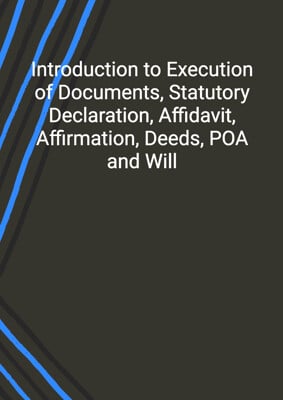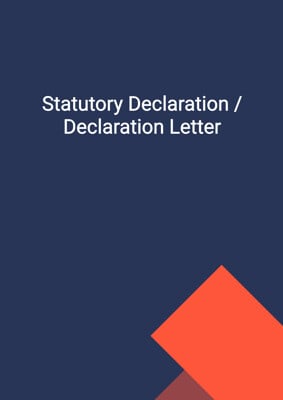How to Tailor the Document for Your Need?
01
Create Document
Click "Create Document" button and the document will be prepared with your account details automatically filled in.
02
Fill Information
Please fill in any additional information by following the step-by-step guide on the left hand side of the preview document and click the "Next" button.
03
Get Document
When you are done, click the "Get Document" button and you can download the document in Word or PDF format.
04
Review Document
Please review the document carefully and make any final modifications to ensure that the details are correct before sending to the addressee.
Document Preview
Document Description
A letter of undertaking for a project is a written commitment or assurance given by one party to another, typically from a contractor to a client or project owner. It specifies that one party will carry out the project in compliance with all existing and future terms and conditions.
A letter of undertaking provides a sense of security and confidence to the parties, allowing project planning and management, and thus better coordination and alignment between the contractor and the client. If there are any issues or disputes arising during or after the project, this letter acts as a legal document that provides a basis for resolving.
The entire document consists of several sections. The first section is the introduction, which includes the names and addresses of both parties, the current date, and a salutation. The second section outlines the undertaking of Party 2 to comply with all existing and future terms and conditions issued by Party 1 in relation to the project. The third section requires Party 2 to notify Party 1 of any material changes regarding the project and provide further information as requested. The fourth section states that Party 2 must notify Party 1 immediately in the event of project termination and that no further claims can be made against Party 1. The fifth section requires Party 2 to seek written approval from Party 1 if there will be a delay in completing the project. The sixth section emphasizes the importance of not infringing any intellectual property rights of third parties during the project. The seventh section contains warranties made by Party 2 regarding the impartial, timely, and diligent completion of the project, the accuracy of information provided, and compliance with applicable laws and regulations. The eighth section, if applicable, includes an indemnity clause where Party 2 indemnifies Party 1 against various claims and liabilities. The ninth section states that Party 1 reserves the right to withdraw approval for the project if Party 2 defaults on any of the terms and conditions. The document may also include additional conditions if specified. The jurisdiction, inconsistencies, amendment, severability, and signature blocks are also included in the document.
Each section of the document serves a specific purpose and provides clarity on the expectations and obligations of Party 2. It ensures that Party 2 understands the importance of complying with the terms and conditions set by Party 1 and the consequences of non-compliance. The document also protects the interests of both parties by addressing issues such as project termination, intellectual property rights, and indemnification. Overall, the 'Letter of Undertaking' is a crucial document that establishes a clear understanding between the parties involved in a project.
How to use this document?
Guidance on how to use the 'Letter of Undertaking':
1. Provide the necessary information: Fill in the names and addresses of both parties accurately in the agreement, including their principal place of business. This ensures that both parties are clearly identified.
2. Understand and comply with the terms and conditions: Read the entire document carefully to understand the terms and conditions set by Party 1. Ensure that you are aware of all existing and future requirements related to the project.
3. Notify Party 1 of any changes: If there are any material changes regarding the project, such as changes to the project's plan or budget, notify Party 1 in writing. Provide all requested information concerning these changes to maintain transparency.
4. Promptly communicate project termination: In the event of project termination, immediately notify Party 1 in writing and explain the reasons for the termination. This allows Party 1 to take appropriate actions and ensures proper documentation.
5. Seek approval for project delays: If it becomes evident that you will be late in completing the promised project, seek the prior written approval of Party 1. It is important to communicate any delays promptly to avoid misunderstandings.
6. Ensure compliance with intellectual property rights: Take necessary precautions to ensure that no intellectual property rights of any third party are infringed upon during the conduct of the project. This protects both parties from potential legal issues.
7. Fulfill warranties and comply with laws: Perform and complete the project in an impartial, timely, and diligent manner. Ensure that all information provided is true, accurate, and complete. Comply with all applicable laws and regulations throughout the project.
8. Indemnify Party 1 if applicable: If the indemnity clause is included in the document, understand the scope of indemnification and the potential liabilities involved. Take necessary measures to fulfill the indemnity obligations.
9. Be aware of Party 1's right to withdraw approval: Understand that Party 1 reserves the right to withdraw approval for the project if you default on any of the terms and conditions. Comply with the agreed-upon obligations to maintain a positive working relationship.
Following these steps will help you effectively use the 'Letter of Undertaking' and ensure a smooth execution of the project while protecting the interests of both parties involved.
Not the right document?
Don’t worry, we have thousands of documents for you to choose from:








